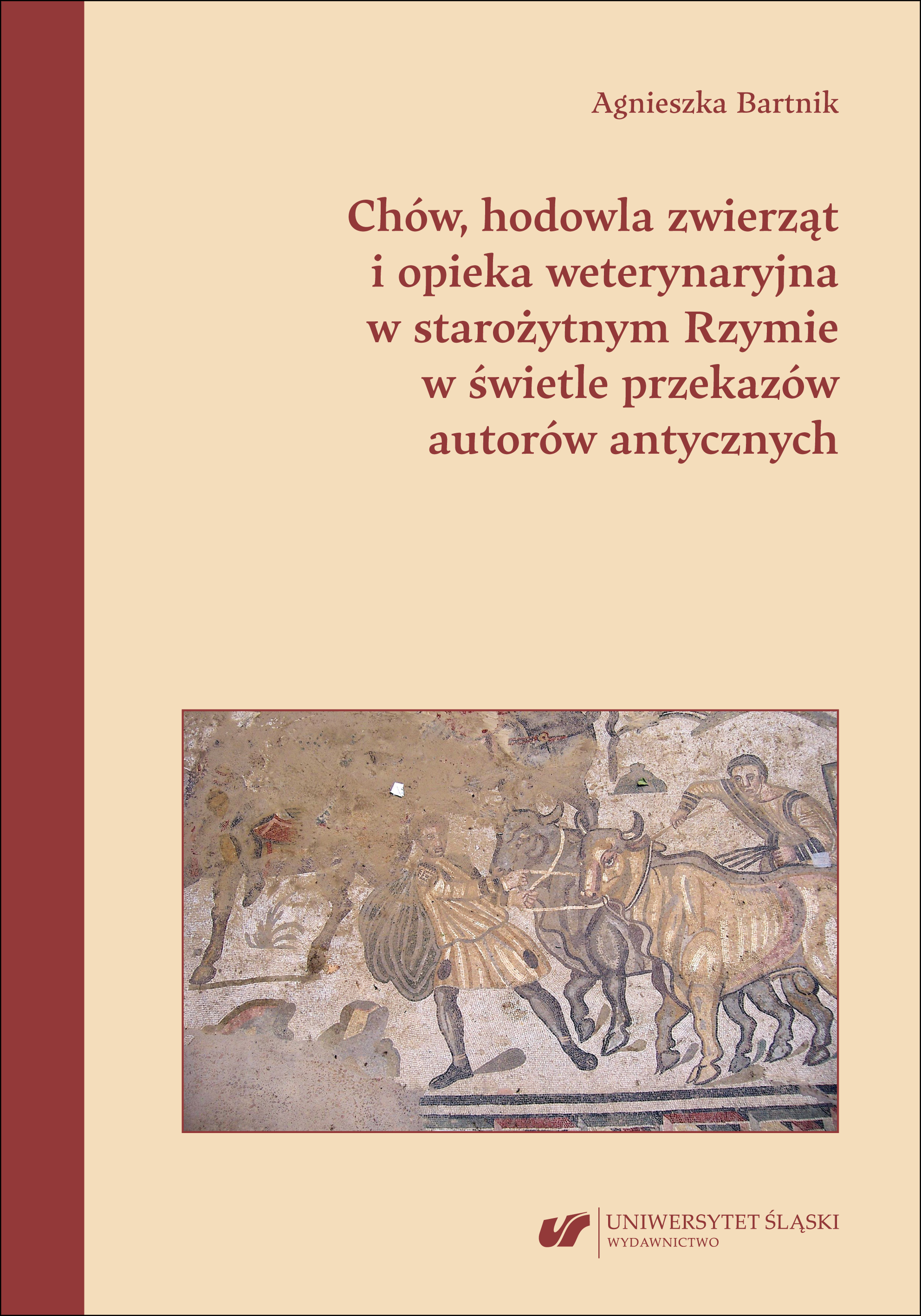Animal husbandry, breeding and veterinary care in ancient Rome in the light of the accounts of ancient authors


This work is licensed under a Creative Commons Attribution-ShareAlike 4.0 International License.
Details about this monograph
Synopsis
The ancient Romans attached great importance to agriculture and breeding, which were one of the most important branches of the economy. Animals provided the necessary draft power, food products, materials for clothing production, ingredients for medicines, offerings to the gods, etc. Animal breeding also provided a steady income for farm owners. The high price of farm animals and the products obtained from them meant that attention was paid to the selection of caregivers, their knowledge and skills in the care and feeding of animals, as well as their diagnosis and treatment. The knowledge of Roman agronomists in this area was so advanced that it allowed them to avoid many problems resulting from nutritional errors, poor selection of animals, or the spread of dangerous diseases in herds.
Mammals played the greatest role on Roman farms, with cattle, sheep, goats and pigs being the most common. Horses were initially a small group of animals, but their breeding gradually became popular due to social and economic changes in the Empire. Among birds, the most popular were chickens, ducks and geese, and among insects, bees. Donkeys, mules, rabbits, various types of rodents, wild birds, fish, snails, etc. were also kept on farms, although in the case of some species special conditions were needed, which limited their breeding.
Breeders paid great attention to the proper selection of animals for breeding, their nutrition, including proper storage of feed, and the diagnosis, prevention and treatment of diseases.
Ancient texts preserved to this day allow us to create a unique picture of the methods used to breed and treat animals. The above-mentioned picture is very incomplete, which results from the nature of the written sources, including their textbook nature, and the authors' focus on areas where they themselves had farms. Progressing archaeological and archaeozoological research helps to complete this picture, although it does not fill all the gaps. Archaeozoological material is still very incomplete, although new research results systematically appear.
Patronat honorowy




